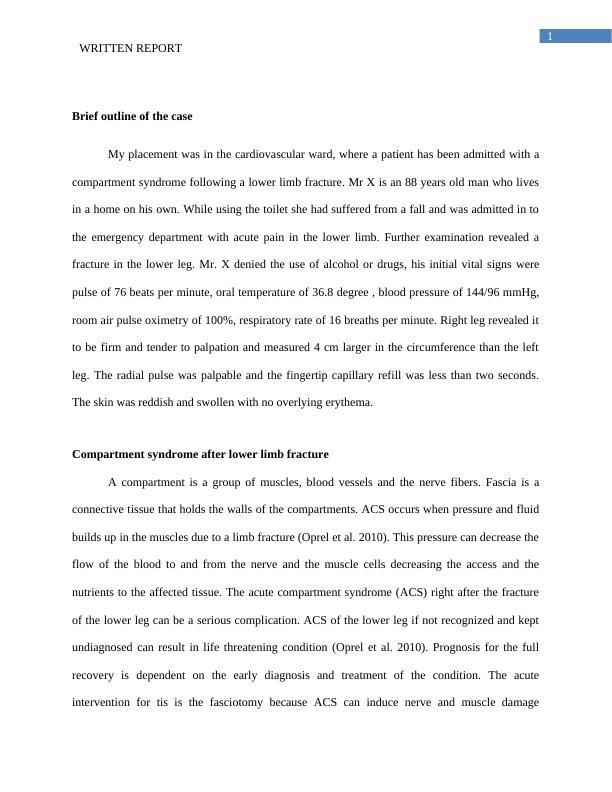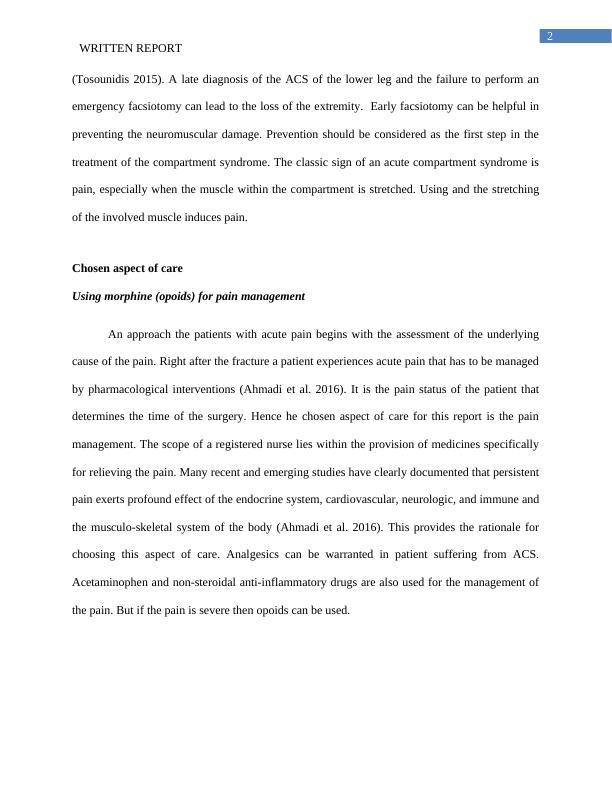Pain Management with Morphine for Compartment Syndrome after Lower Limb Fracture
A guide to Harvard referencing for Nursing & Midwifery students at the University of Tasmania.
8 Pages1886 Words307 Views
Added on 2023-06-11
About This Document
This written report discusses the use of morphine for pain management in a patient with compartment syndrome after a lower limb fracture. The report outlines the chosen aspect of care, the rationale for choosing morphine, and the potential adverse effects of the drug. The report also includes a reflection on the experience of administering the medication and the importance of evidence-based practice in nursing.
Pain Management with Morphine for Compartment Syndrome after Lower Limb Fracture
A guide to Harvard referencing for Nursing & Midwifery students at the University of Tasmania.
Added on 2023-06-11
ShareRelated Documents
End of preview
Want to access all the pages? Upload your documents or become a member.
Compartment Syndrome and Lower Leg Fracture: Nursing Management and Pharmacological Interventions
|8
|1140
|406
Correction of Acute Anemia and Relative Hypertension
|4
|453
|37
CNA253 AT2 Scenario: Mrs Gwen Boren Assignment 2022
|8
|2244
|10
Compartment Syndrome Assignment PDF
|9
|1915
|33
Health and Homeostasis
|5
|945
|366
What do you consider to be normal/abnormal?
|6
|2541
|15



